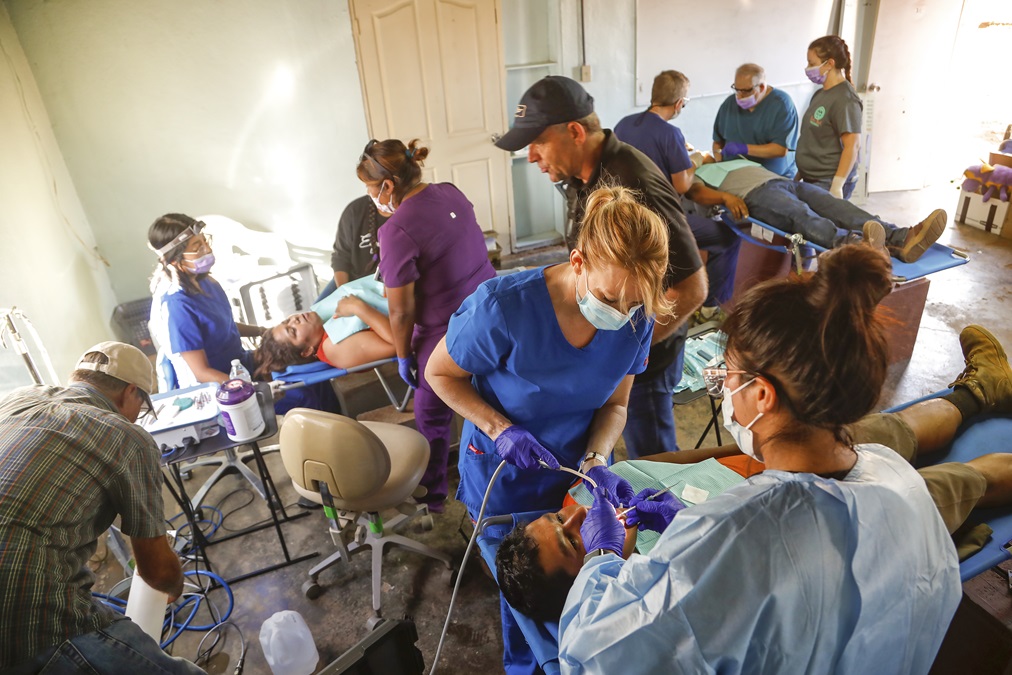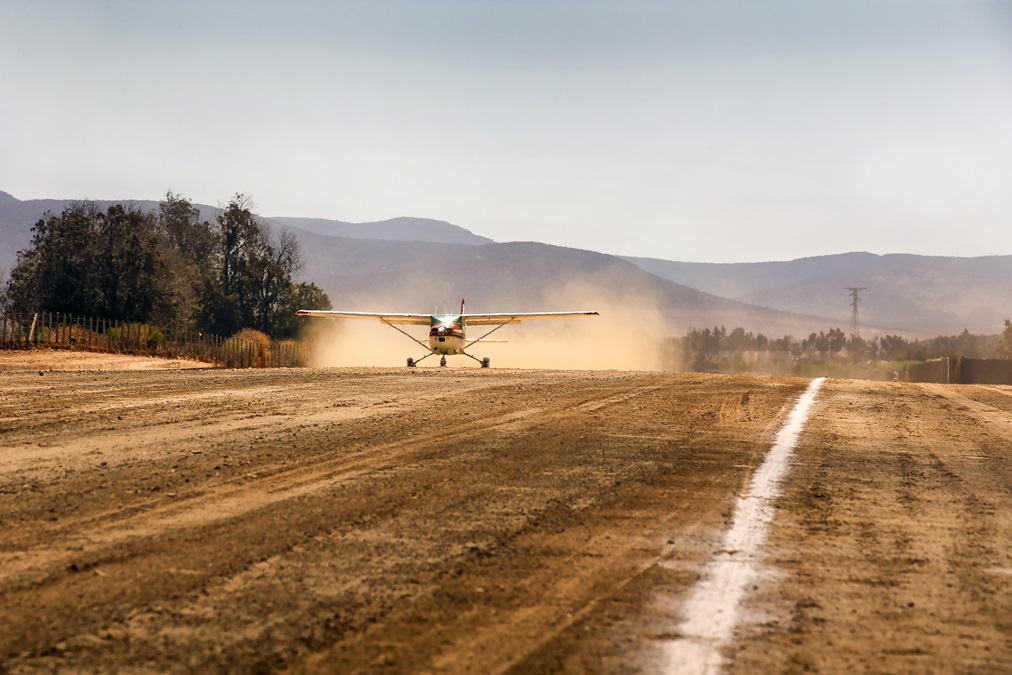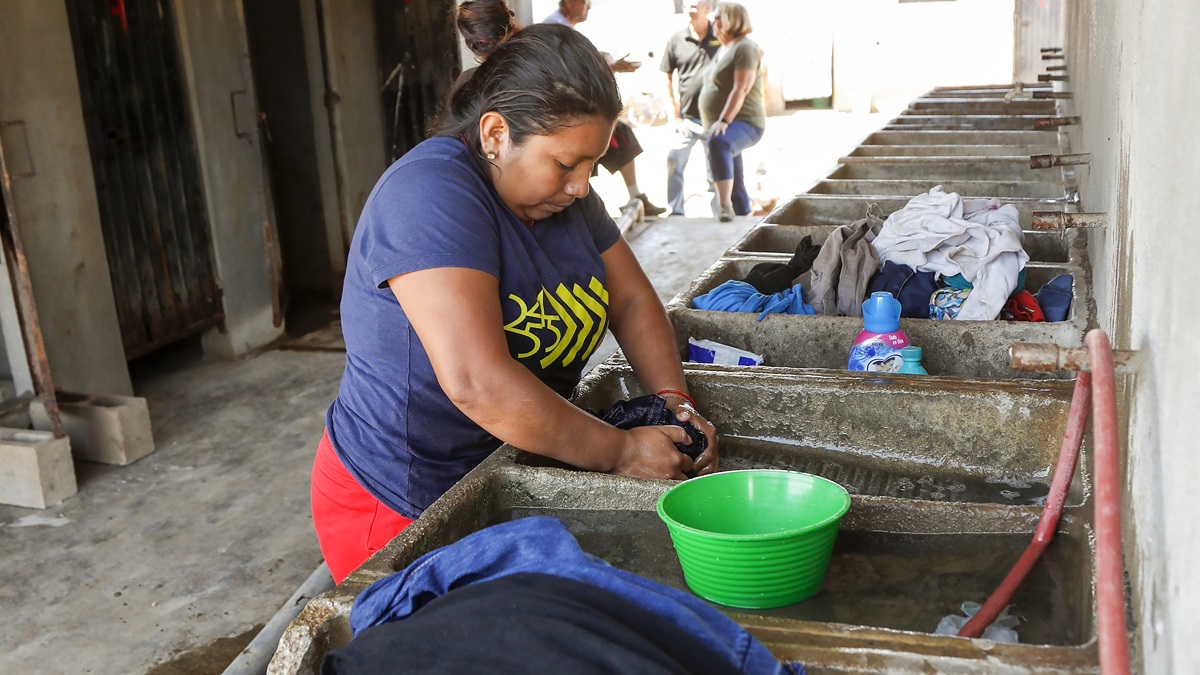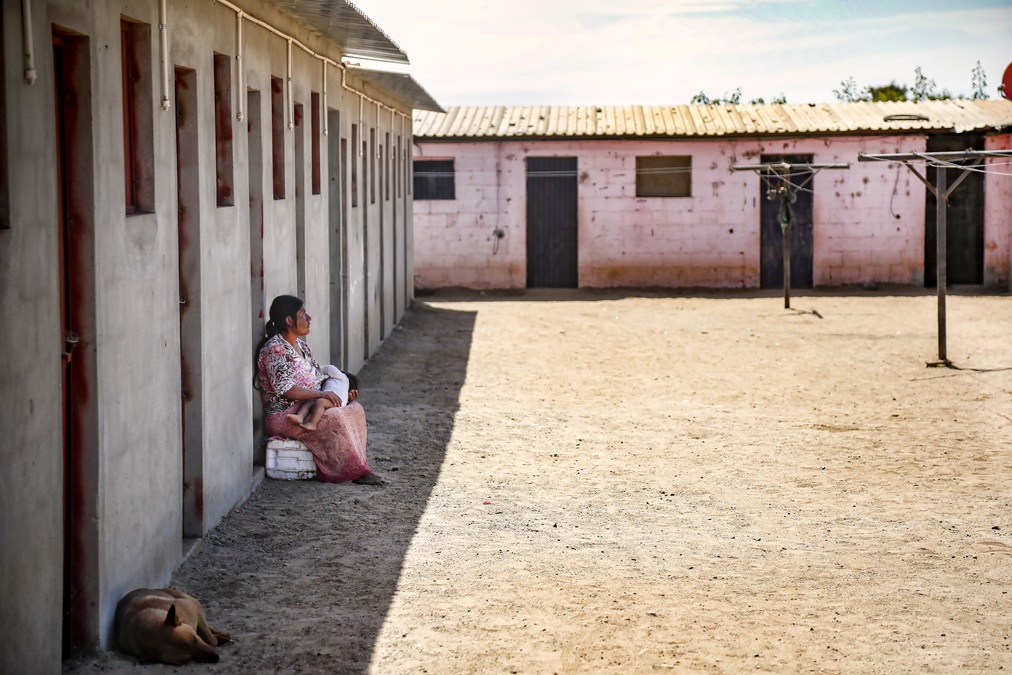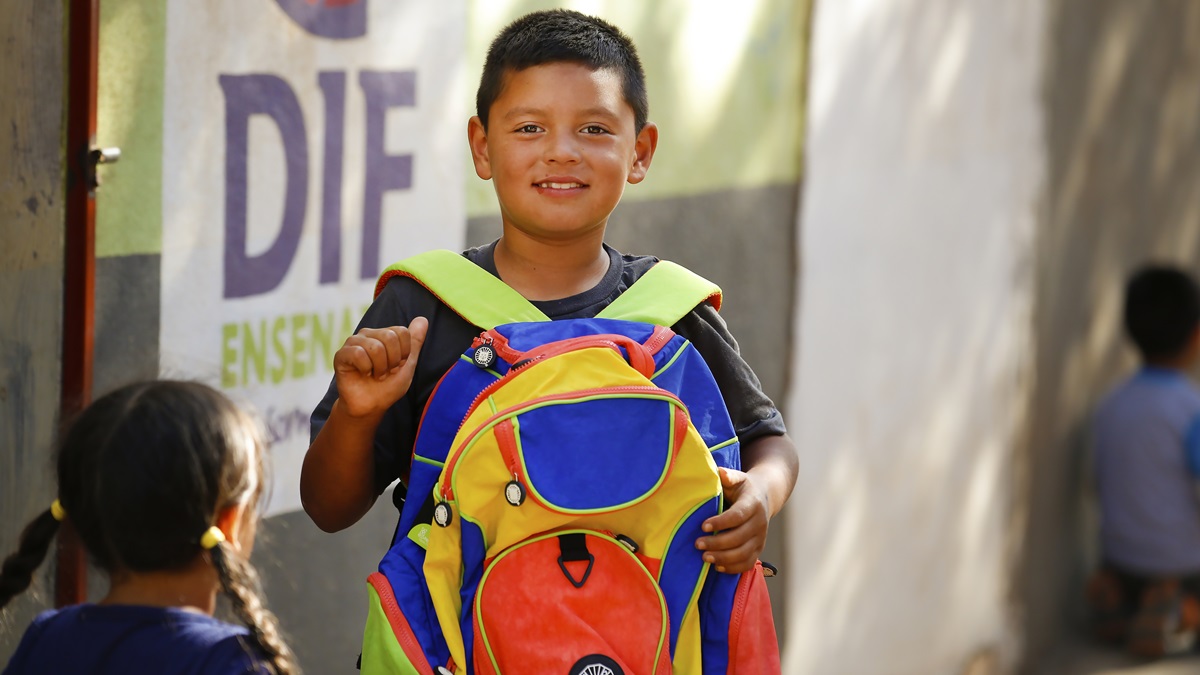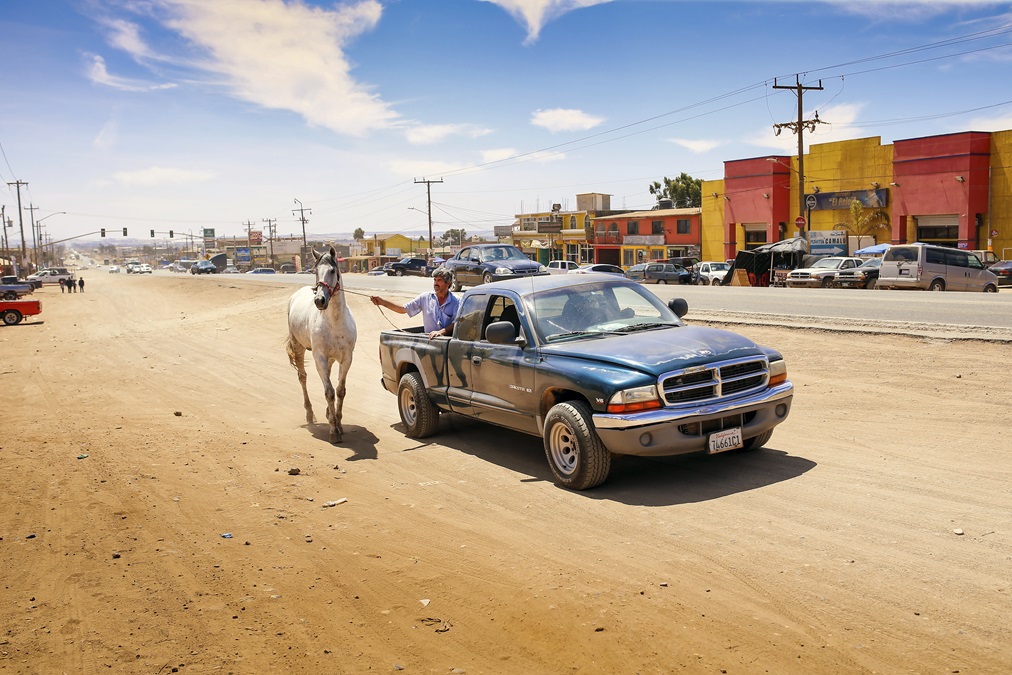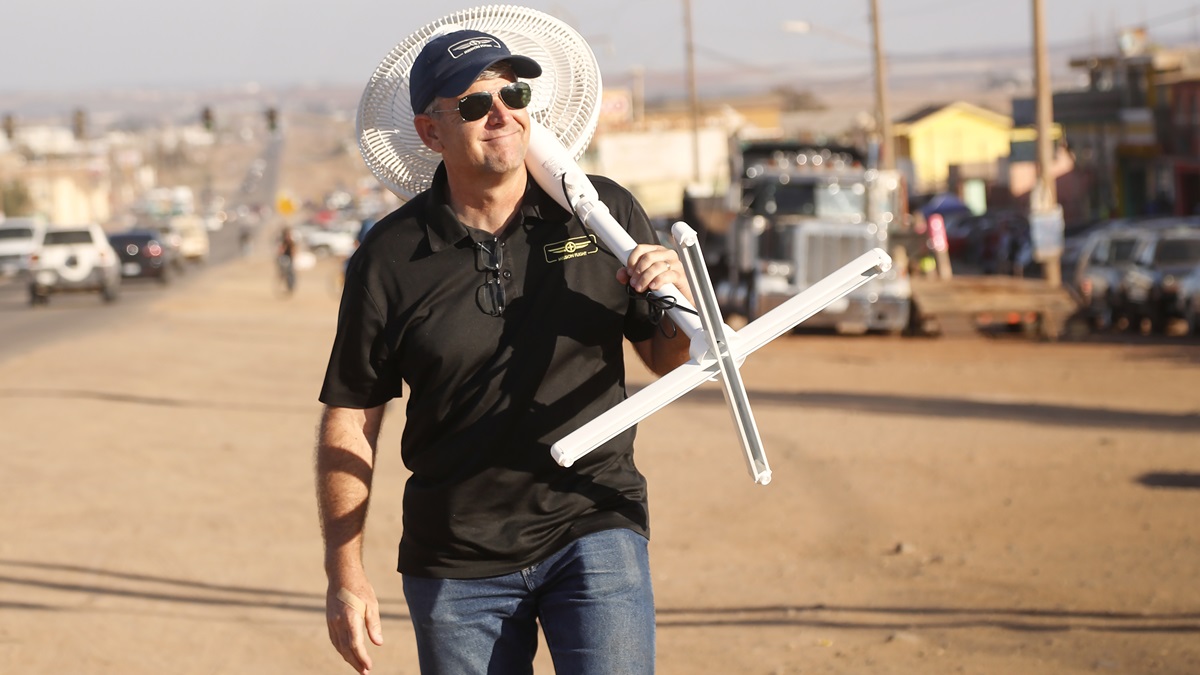Giving Back: A purpose to be a pilot
General aviation aids migrant farming communities in rural Mexico
However, there is no running water and the last occupants could not flush, so the modernity is marred by an odoriferous unpleasantness. It is the first of many contrasts that will mark this trip to San Quintín, Mexico. A band of pilots, doctors, dentists, hygienists, and nurses have stuffed themselves and equipment and supplies into a Piper Saratoga, Cherokee, a couple of Cessnas, and even a Grumman Tiger. They are flying from their suburban homes in Southern California, crossing the border into Mexico, and traveling to extract teeth, check blood pressure, provide solace, and teach children how to maintain their toothsome grins.
Mission Flight was started by pilot Mike Gabelman just three years ago, along with friend and fellow pilot Mauricio Gonzalez. The two friends are members of a church community in El Monte, California. “I went to San Quintín to volunteer at an eye clinic, which is offered twice a year through another organization,” says Gabelman. “On that trip, I met Pastor Joel, who used to be a field worker in the area. He had a vision for his small church to be used as a dental clinic for the surrounding community, which is comprised mostly of farm workers. Dental care is vastly needed.”
In response to what Gabelman calls the “staggering needs” in the area, coupled with the invitation from Pastor Joel Munguia, Mission Flight was formed and built a modern dental clinic in 2017. The group offers dental care six times a year, working with local volunteers from San Quintín.
Strawberries and strife
San Quintín is one of several towns throughout Mexico that are home to the massive agricultural company Driscoll’s. BerryMex is one of Driscoll’s largest suppliers, planting, harvesting, and shipping strawberries and other fruit and vegetables throughout the world. Mexico is just one of Driscoll’s locations; farms in California and Washington also supply the company. Flying in from Southern California, the San Quintín area is marked by the beautiful Pacific Ocean coastline and fields of fruits thriving in the summer sun. Acres of plastic provide cover and the view is one of undulating white sheets shielding vibrant green plants. The fields are a stark contrast to the roads and neighborhoods around them—healthy green adjacent to dusty brown.
Traveling to areas such as San Quintín, it is always the infrastructure that surprises. Route 1, the highway that runs up the Baja California Peninsula from Cabo San Lucas in the south all the way to the California border at Tijuana in the north, is a busy two-lane road with no shoulder. The asphalt simply falls away on either side, usually a 6- to 12-inch lip that is jarring no matter how carefully the driver tries to exit. And an unimproved road borders the highway on either side; people, cars, animals, and trucks create their own byway. With the gravel, the rocks, and the chaos of a Wild West town, you take your suspension and your life into your hands.
Mission Flight relies on donated vehicles to trek across the area, from the airstrip to the church sanctuary to the makeshift clinics. Piled into an old van, the volunteers leave the relative comfort of their aircraft to travel these roads with boxes, dental equipment, generators, and their own baggage on their laps and at their feet. I have flown in a Piper Saratoga with pilot Jon Smalldridge, and a lawn chair as my seatmate. The big, three-fold chair has blocked my view of the mountains as we flew across into Ensenada to clear customs and then to land at Rancho Magaña, the San Quintín airstrip. I don’t understand why we are transporting a beach chair to Mexico and the thing annoys me. Later—seeing its use as a dental chair set on concrete blocks—I recognize my annoyance as stupidity. Everything on a mission like this has a purpose.
Mission Flight will support two dental clinics this weekend. There are 29 of us—27 who have a purpose. Senior Photographer Chris Rose and I are observers. One clinic will be at the base camp, which is the home and small church of Munguia and his wife, Goya. Mission Flight has helped erect a structure that includes a dental surgery, bathrooms, and dormitory for visiting volunteers. The house of Munguia and his family will be overrun this weekend, and Goya will cook three meals a day for the volunteers in a home without running water. The volunteers will share meals around a big communal table, helping themselves to hotcakes and tortillas at breakfast, beans and rice at lunch, and a chicken dish for dinner. The food is tasty, especially with the always-present homemade salsas and hot sauces.
Recently Mission Flight has taken the clinic on the road and set up in a nearby village about an hour’s drive away. In back rooms adjacent to the small police station and jail (one occupant this day), the 10 or so volunteers unpack supplies, construct a dental surgery (there’s that lawn chair), start generators, and even create a makeshift X-ray station. Within hours they are ready for patients, and a line has formed outside the station.
Infrastructure and flea infestation
As the day heats up, the crumbling infrastructure around the police station becomes apparent. The sewage pipe has burst and along the back of the buildings a stream of foul-smelling water is collecting. Inside, the number of people is swelling as one volunteer checks in patients, another checks blood pressure and temperatures, and another takes X-rays. Hygienist Cande Labander takes on a superhero visage as she wields a heavy gun-like machine to take photos of damaged teeth that appear on her laptop computer.
Dr. Marc Haney, who has piloted his own Cessna 182 to San Quintín and who manages the off-site clinic, works closely with Labander to check the X-rays and determine the teeth that should be extracted. Since hygiene and access to dental care is limited, the best treatment is to extract the infected teeth. He takes the patient back to his lawn chair, helps them to be calm, administers Novocain, and goes about the business of removing a bad tooth. All the while a Christian music station plays on an iPhone in the background and hygienists at two other lawn-chair stations clean teeth.
Most of the patients are children, although one woman catches my eye. She’s tiny like a child but must be 65 or 70 years old. She is having difficulty communicating with the volunteers and I realize she speaks an entirely different language. Although most of the patients are local to San Quintín or from migrant farm families that speak Spanish, this small woman is from one of the indigenous peoples that make up more than half of Mexico’s agricultural workers. It hurts me to watch her hurting after Haney extracts her tooth and pains me to see the pain on her face as she holds gauze to her mouth. I am humbled by my inability to help; I don’t speak Spanish, let alone her dialect, one of the many Mixtec languages spoken across the country.
The line of people waiting for help stretches throughout the local park near the station, and most of the people appear poor but not impoverished. They have family groups, friends, and seem to be in relatively good health. (Unfortunately most of the people consume high-sugar processed foods and love their sodas, so there’s a lot of obesity and rotted teeth thanks to the ubiquitous Cokes and Fanta Orange.)
“Dental and eye problems are high among the farm worker population, and there is a genuine lack of access to free or affordable dental/optical care locally,” Gabelman says. “Diabetes is a big problem in the region, and with it are all the associated dental and optical problems.”
Although I have a sense of need, I don’t feel a sense of hopelessness—so Gabelman takes Rose and me further into the area.
BerryMex advertises for migrant workers during its growing season, offering workers free housing and a $9 to $13 a day wage for picking fruit six days a week, sunup to sundown. One of the 600 or more company-run housing encampments that exist in these agricultural areas across Mexico is in San Quintín. Gabelman cautions that we will be appalled at the conditions but nothing that he could have described would prepare me for this: a U-shape concrete building within a compound that has 60 8-by-10 square foot “homes” in which whole families live—no mattresses, just a slab floor, no running water, and “toilets” that are holes in the ground and the smell of which is unbearable. It is a Saturday and the only occupants are children because their mothers and fathers (and older siblings; workers start picking at age 13) are out in the fields.
Oh, to be out in the field. This encampment is a sandy, dirty, flea-infested hovel and the children are covered in scabs, bites, and infected sores. Luis Hernandez—who, along with his wife, Irma, runs an after-school program at the encampment—weeps as he shows us the “free housing.” Gabelman drives back into town to buy creams and ointments for the children but, as he says, what can several tubes of cream really accomplish here, especially as the children—mainly the young girls—are subject to abuse if they use the showers.
Later, back at the Mission Fight sanctuary, Rose says to me, “Even if it was illegal to flee a burning building, you’d still get your family out. No wonder these people risk fleeing to the U.S. illegally.”
Flights of faith
“It’s not about religion,” Gabelman says. “It’s about people who share a common desire to serve people in need.”
I consider myself a Christian even though my family has become holiday-only churchgoers. But I do not have the faith and belief in Jesus Christ that these volunteers have. I wish I did, because I am not sure I could fly back here every month and still see this need and believe that God cares. That’s what faith is, I guess. It shines from the eyes of this band of pilots, doctors, dentists, hygienists, and nurses here and their continuous desire to help no matter how insurmountable the task.
Gonzalez got his pilot certificate after participating in other missions. “It’s not only great to be a pilot, but to have a purpose to be a pilot,” he says. “What I would tell other pilots who want to help is that this gives a joy and a purpose to the gift of flight.”
Of course, this is also a typical group of pilots. There’s a lot of good-natured ribbing about each’s piloting skills. And no amount of preflight planning predicts all the challenges that cross-border flying entails. We get stuck for an hour or more in Ensenada because of a marine layer over our destination; I count more than 28 stamps on each of the papers and passport information and eAPIS forms we fill out; and the guy who remembered to pack snacks is the most popular.
Seven aircraft flew to San Quintín on Friday, each straining the limits of weight and balance. Flying back after the weekend we are bonded as only strangers who have worked hard together for a common good can be.
“We saw over 300 patients,” Haney says. “GA brings to San Quintín something they would never have otherwise. We’ll be home at two o’clock on a Sunday afternoon; without GA we would not have been able to be here.”
And coming back is exhausting; I am amazed by the stamina of these people. We take off and land eight times in one day, our last as a Cherokee Six in the land of triple sevens at LAX.
“Please consider joining us. We have a lot of resources in the states and a lot of need down there. But there is a bottleneck—getting the resources to the need—we need general aviation pilots,” Gabelman says.
Email [email protected]

